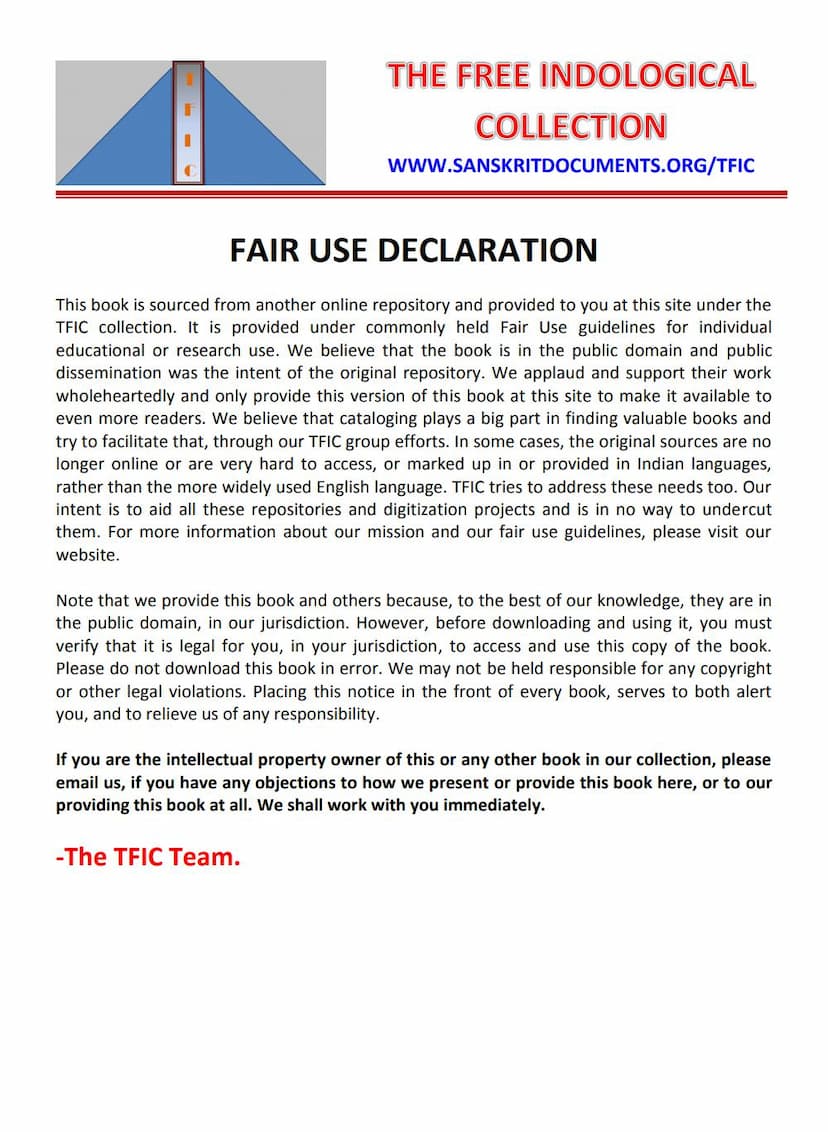Karmashala Parikalan
Added to library: September 2, 2025

Summary
This document is a comprehensive summary of the book "Karmashala Parikalan" (Workshop Calculation) by Gurubachansingh Narang, published by Haryana Sahitya Academy, Chandigarh. It is a Hindi translation of a book originally published by the Ministry of Labour, Government of India.
The book is intended for students of ITI (Industrial Training Institutes) in Mechanical and Electrical trades. It aims to provide them with a strong foundation in mathematics and its application to workshop problems.
Here's a breakdown of the content:
Overall Structure:
The book is divided into three main parts:
- Part 1: General Problems for All Trades (Mechanical and Electrical) This section covers fundamental mathematical concepts.
- Part 2: Specific Workshop Calculation Problems for Different Trades: This part delves into problems relevant to specific apprentice groups and trades.
- Part 3: Appendix: This section contains useful tables and references.
Detailed Summary of Chapters:
Part 1: General Problems for All Trades
- Chapter 1: Numbers and Basic Arithmetic Operations: Covers numbers, fractions, decimals, addition, subtraction, multiplication, division, and converting between fractions and decimals. Includes practical workshop-related problems.
- Chapter 2: Units and Measurements: Discusses the British and Metric systems, including the International System of Units (SI). Covers units for length, area, volume, capacity, weight, time, angle, temperature, force, work, power, and energy, along with their conversions and relationships.
- Chapter 3: Powers and Roots: Explains factors, powers, bases, exponents, multiplication and division of powers, and finding square roots.
- Chapter 4: Percentage: Defines percentage and covers its conversion to decimals and fractions, with applications.
- Chapter 5: Ratio and Proportion: Deals with ratios, finding terms in a ratio, proportion, direct and inverse proportion, and their applications in workshop problems like similar triangles, levers, hydraulic machines, etc.
- Chapter 6: Algebraic Symbols and Elementary Algebraic Operations: Introduces algebraic symbols, coefficients, expressions, like and unlike terms, and basic operations (addition, subtraction, multiplication, division) in algebra. Also covers rules of exponents.
- Chapter 7: Factors and Equations: Covers algebraic formulas, factorization, different types of fractions, simple equations, simultaneous equations, and quadratic equations, with their applications in solving problems.
- Chapter 8: Logarithms and Their Advantages: Explains logarithms, their relationship with exponents, how to find them using tables, and their application in calculations.
- Chapter 9: Geometry: Covers fundamental geometric definitions, angles, triangles (properties, Pythagoras theorem, similar triangles), quadrilaterals (rectangles, squares, parallelograms, rhombuses), circles, and polygons, with their applications in workshop problems.
- Chapter 10: Mensuration: Focuses on calculating the areas and volumes of plane and solid figures, including triangles, squares, rectangles, parallelograms, trapezoids, circles, ellipses, prisms, cylinders, pyramids, cones, spheres, and their frustums. It also includes calculations for weight and cost of materials.
- Chapter 11: Trigonometry: Introduces trigonometric ratios, the use of trigonometric tables, calculating the area of triangles, and finding heights and distances using trigonometry, with workshop applications.
- Chapter 12: Drawings: Discusses technical drawings and their use.
Part 2: Specific Workshop Calculation Problems for Different Trades
- Chapter 13: Workshop Calculation Problems related to Apprentice Group 1, 3, 6, 9: Covers topics like surface speed, machining time for drilling, depth of cut, volume of metal removed, machining time in lathe work, taper turning, gear calculations, dividing heads, indexing, helical milling, reduction factors, etc.
- Chapter 14: Workshop Problems related to Apprentice Group 2.
- Chapter 15: Workshop Problems related to Apprentice Group 4: Focuses on electrical concepts like current, voltage, resistance, series and parallel connections, electrical power, voltage drop, etc.
Part 3: Appendix
- Table 1: Conversion Table (Inches to Millimeters)
- Table 2: Conversion Table (Millimeters to Inches)
- Table 3: Density of Materials
- Table 4: Greek Alphabet
- Table 5: References
- Table 6: Mathematical Tables (Logarithms, Antilogarithms, etc.)
Key Features and Approach:
- Gradual Learning: The book follows principles of teaching by progressing from known to unknown and from simple to difficult concepts.
- Practical Examples: Each chapter includes numerous solved examples to illustrate the application of theoretical concepts.
- Practice Exercises: Exercises are provided at the end of each chapter for students to reinforce their learning.
- Metric and SI Units: The book emphasizes the metric system and also introduces SI units, making it relevant for modern technical education.
- Visual Aids: Diagrams and figures are used to clarify concepts and problems.
- Comprehensive Coverage: The book aims to cover a wide range of mathematical topics essential for mechanical and electrical trades.
In essence, "Karmashala Parikalan" is a practical guide designed to equip technical students with the necessary mathematical skills for their respective trades, bridging the gap between theoretical knowledge and practical workshop application.